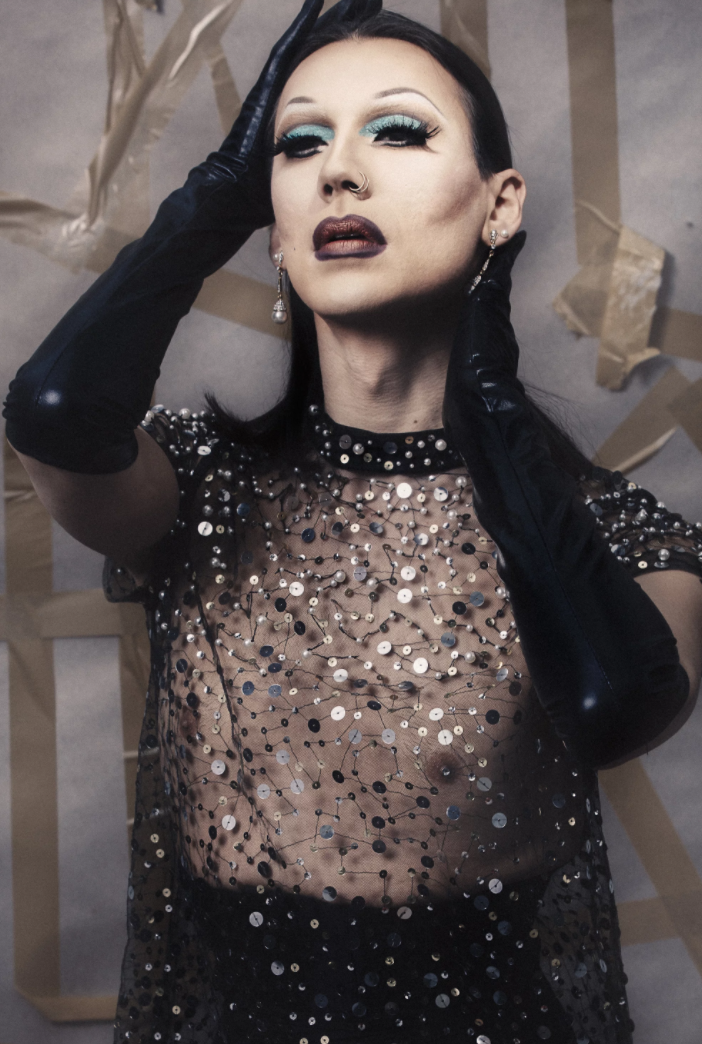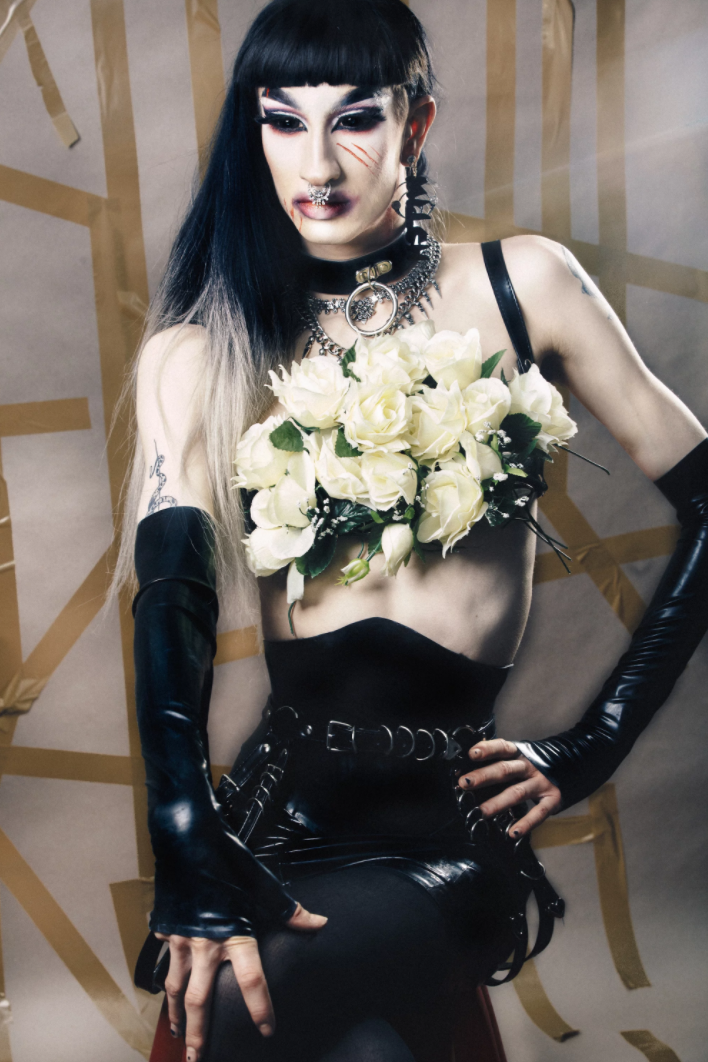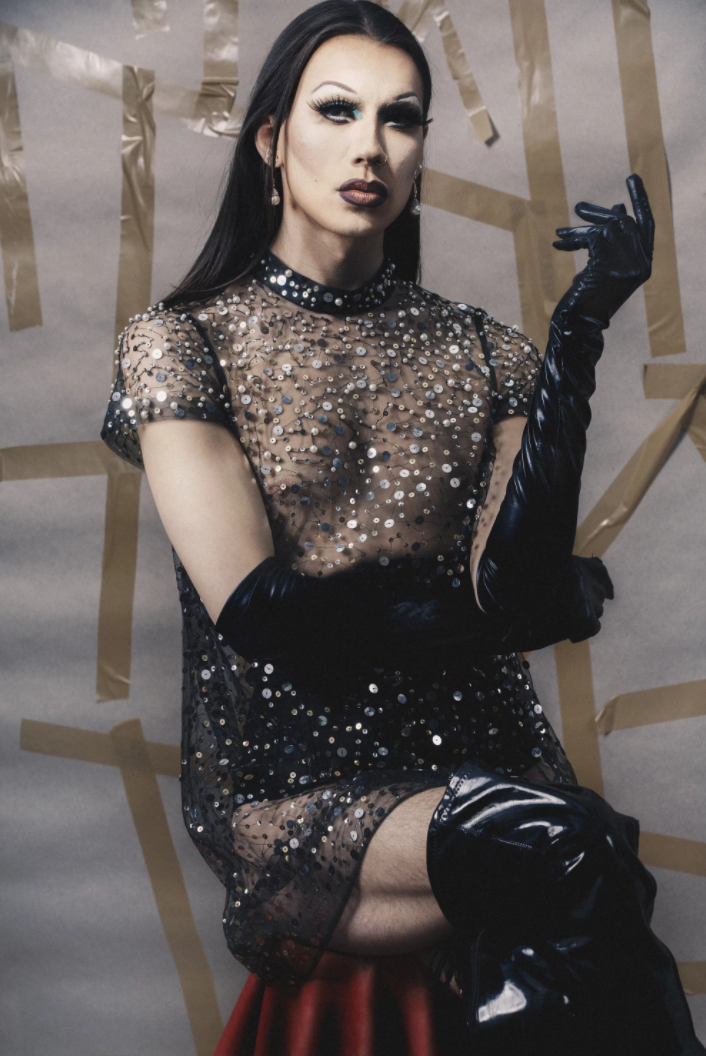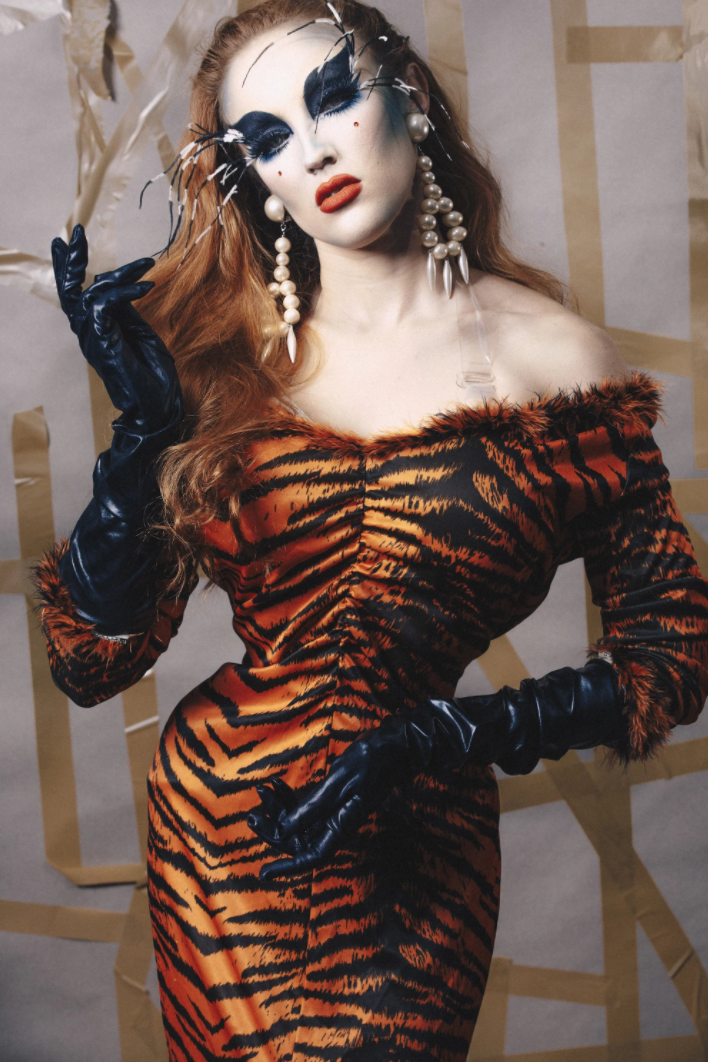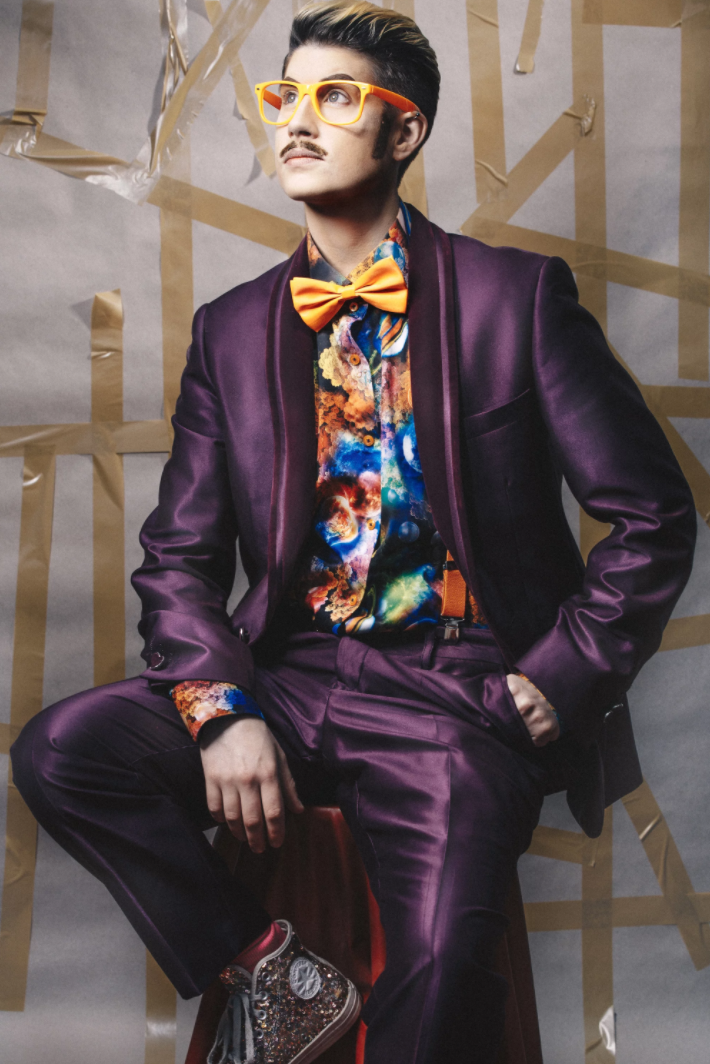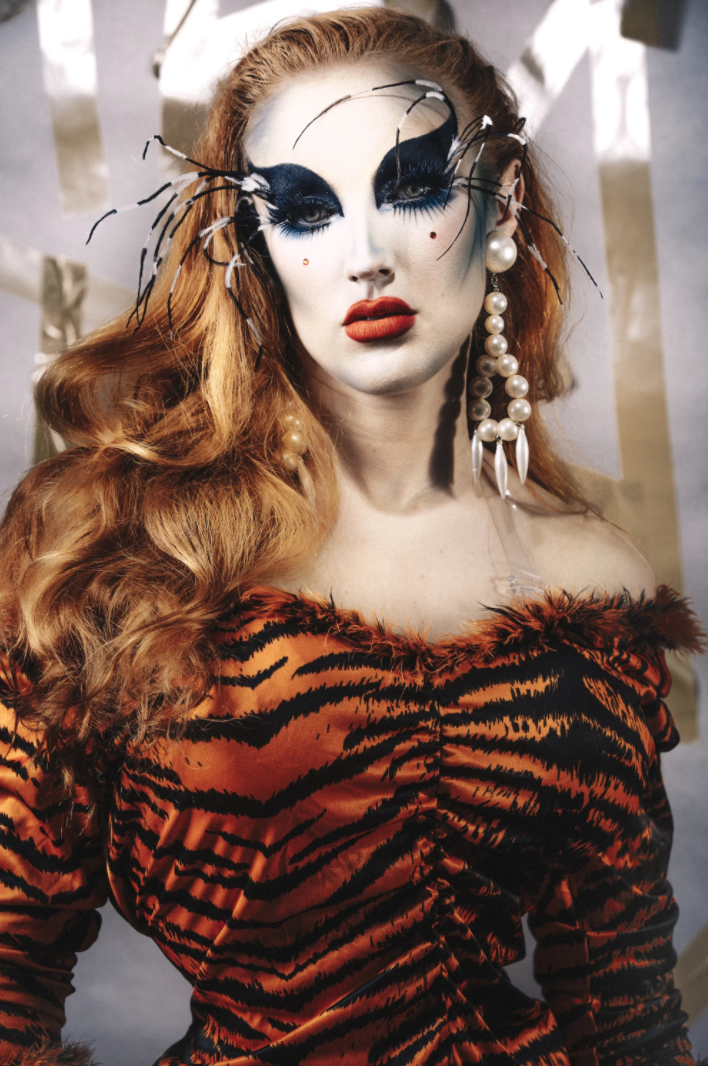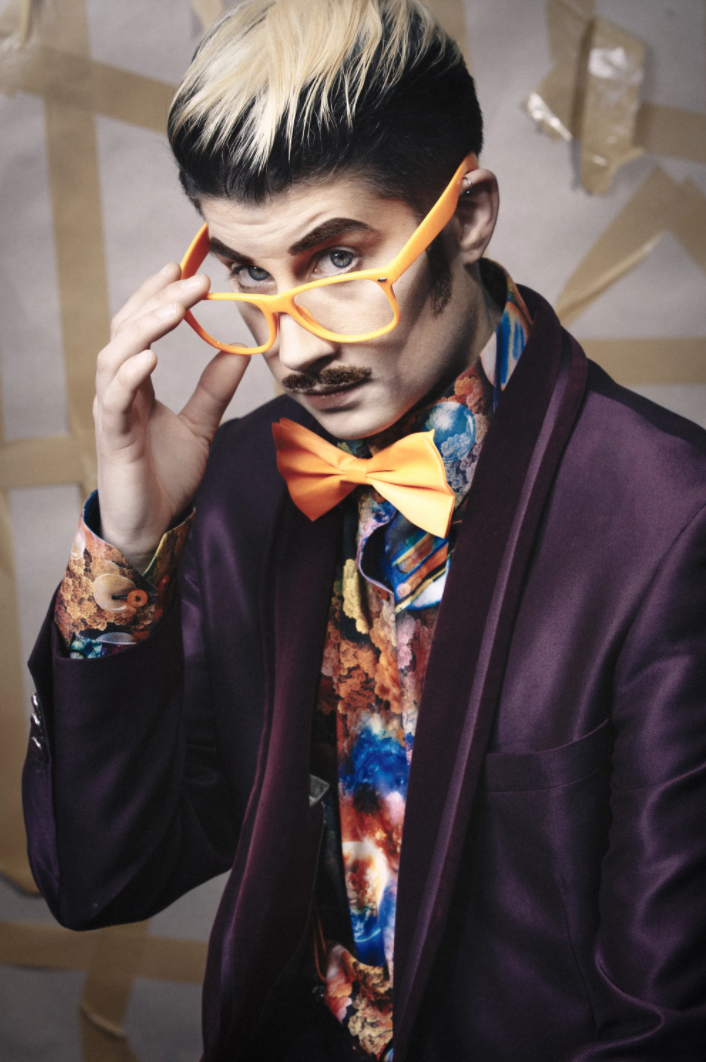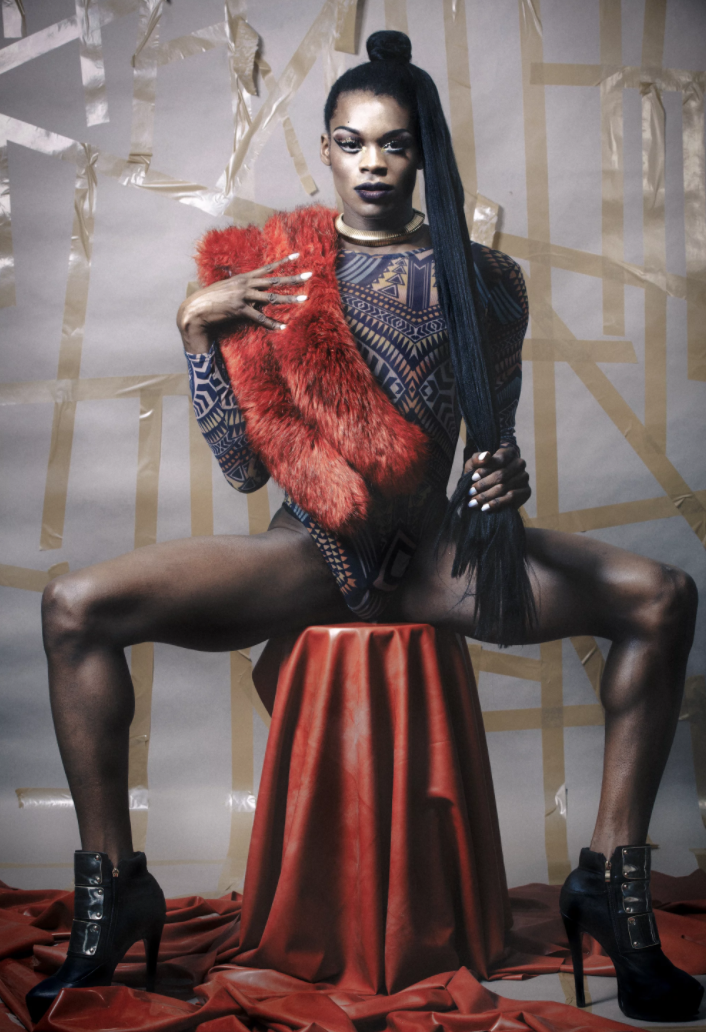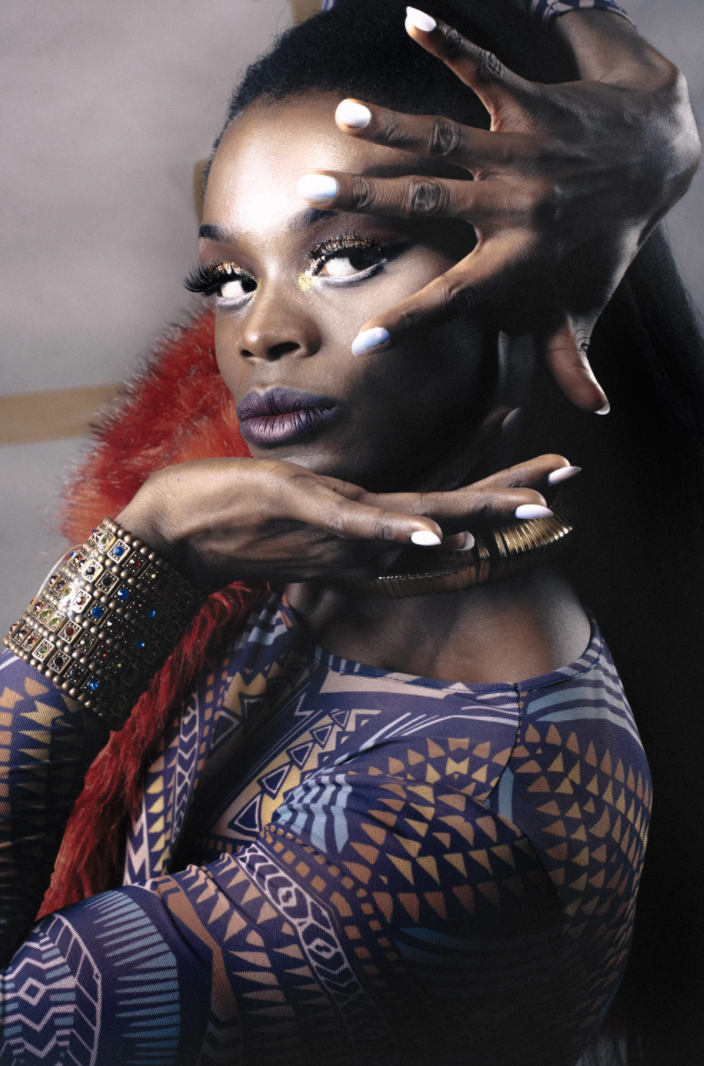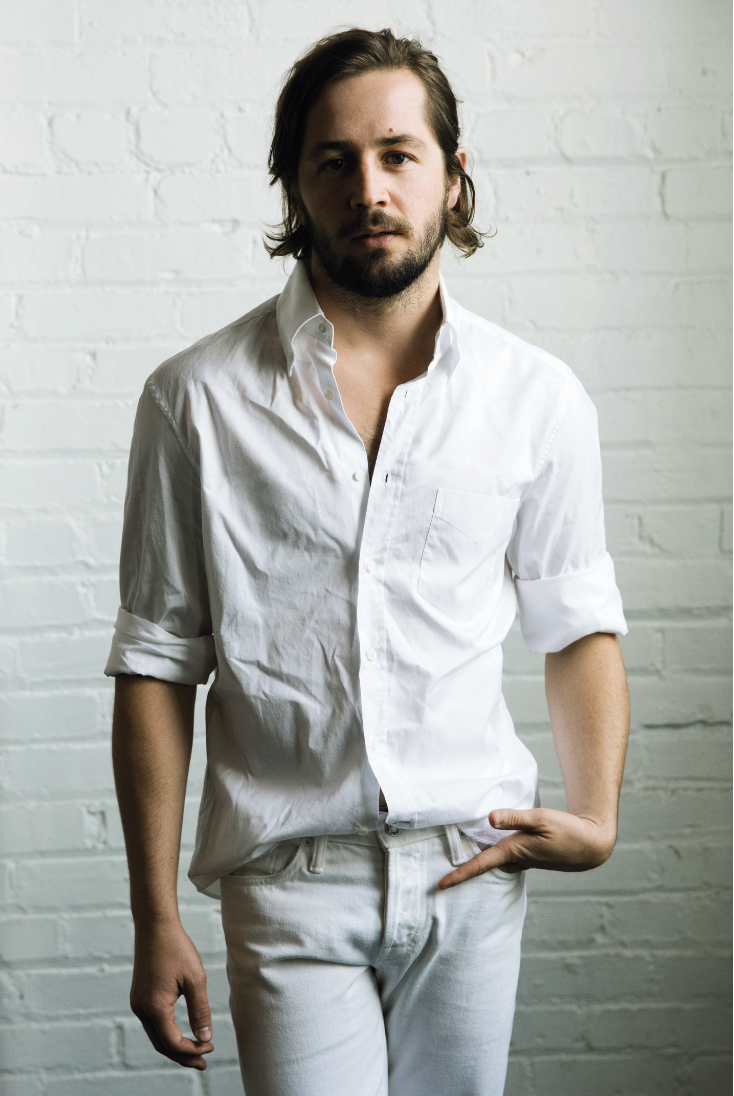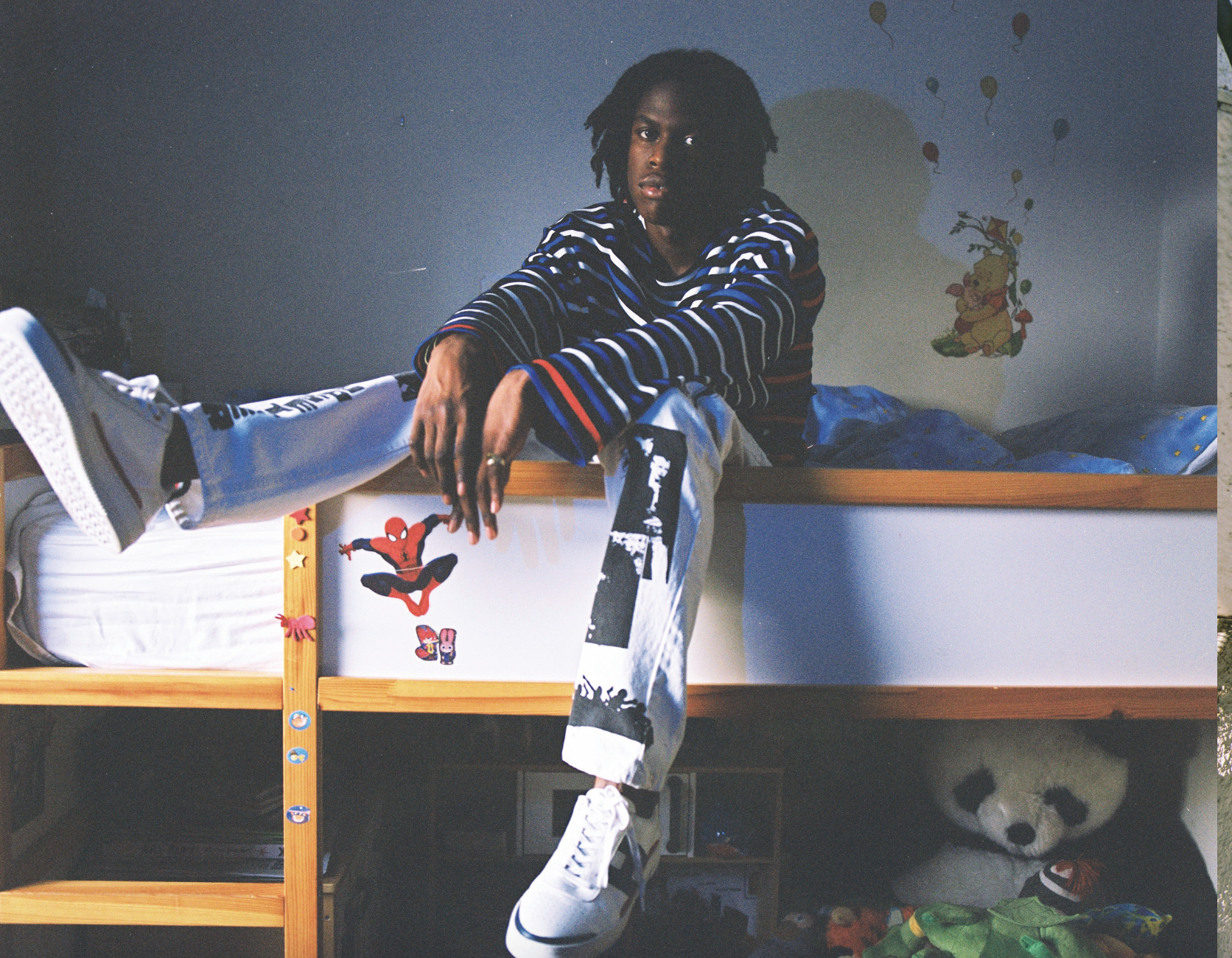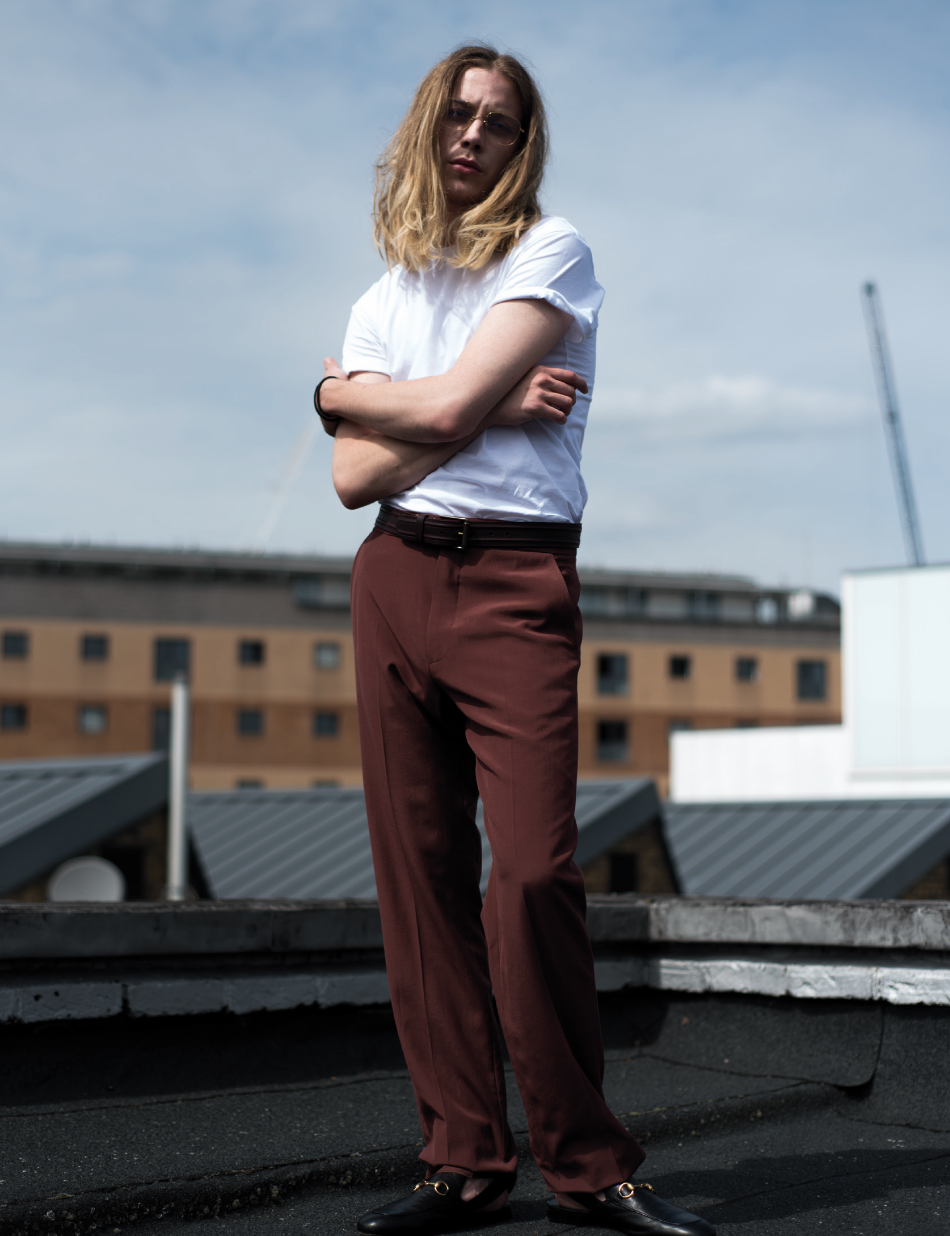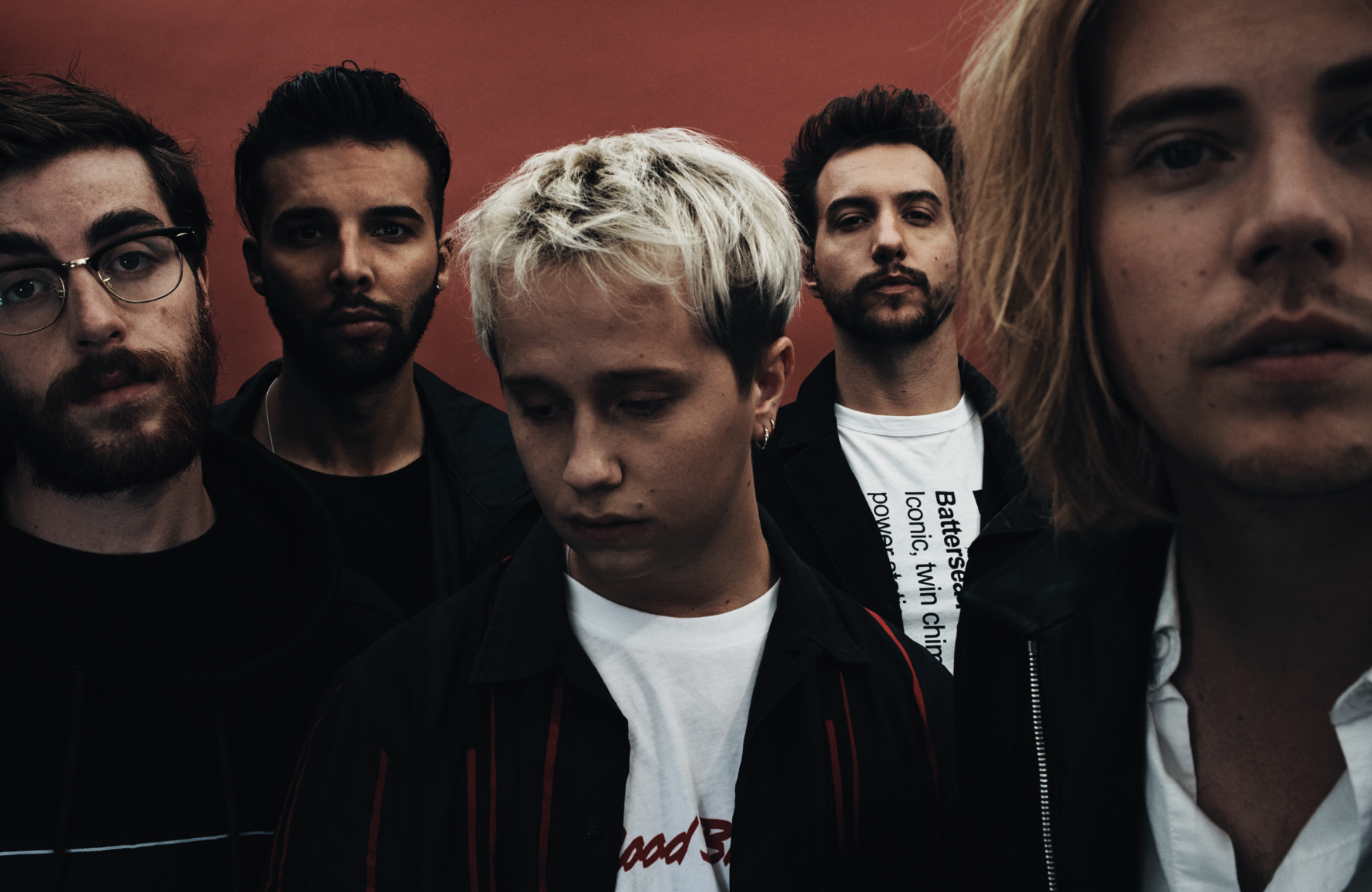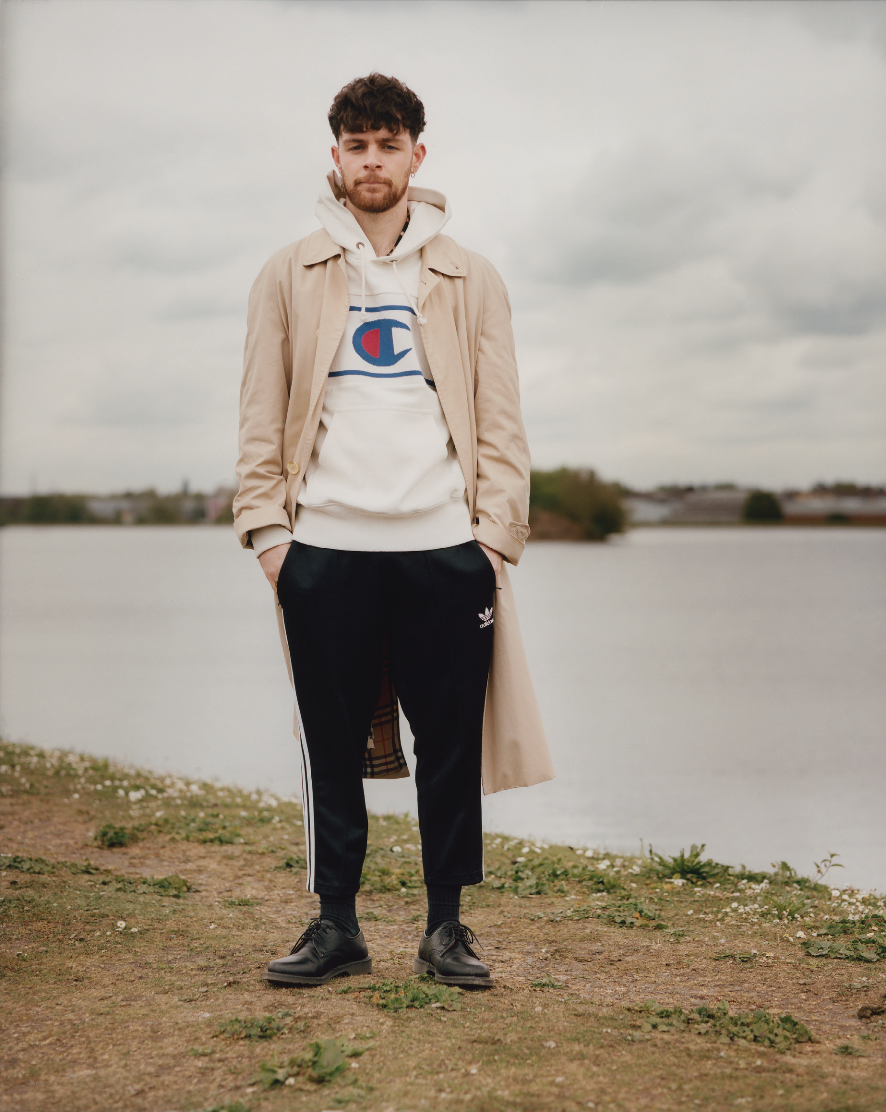Drag
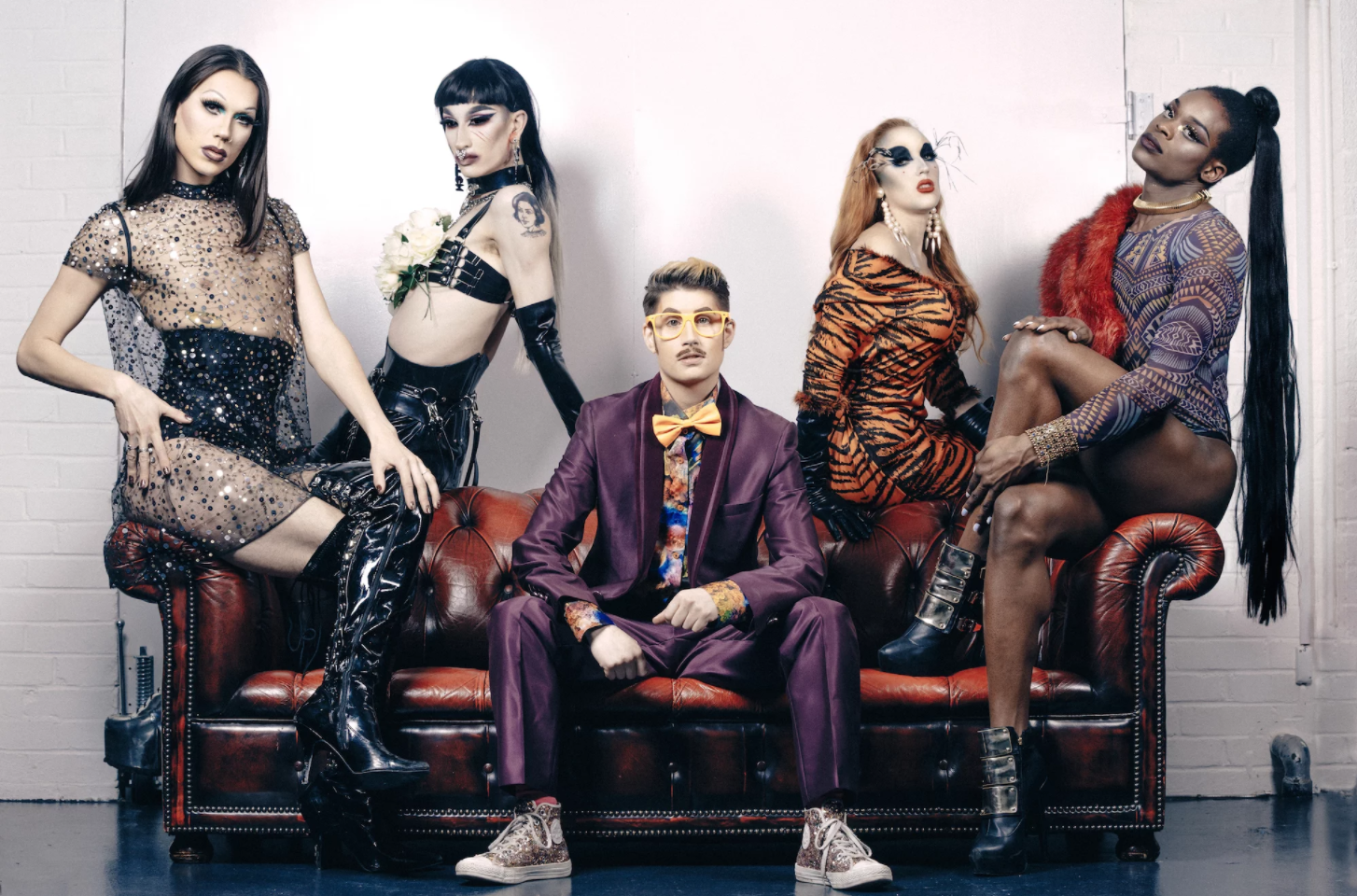
The new season of Ru Paul’s Drag Race is now well and truly under way, lighting up our computer screens through not-quite-legal streaming sites or through the binge-watching necessity, Netflix. By now, your timeline is probably filled with gifs of queens throwing shade from every angle – “you’re beautiful, you’re a model, you look like Linda Evangelista” – and there are probably even more “SLAY BITCH” comments under your mate’s fire emoji selfies. The popularity of the show has allowed us to not only watch some of America’s best drag queens lip synching for their lives in full HD glory, but it has also worked at getting more people talking about the art of drag. But as Mamma Ru once said: “[Drag] will never be mainstream.”
Sitting in Hoi Polloi with Jonny Woo, he tells me the same thing. “Is East London drag mainstream? No! It’s all underground.” Instrumental in creating the East London drag scene, Jonny started to explore drag in New York in 2000 and he brought back the Big Apple’s style – “All heels and jock straps!” – to the small pubs of the East End. I ask what the response was when he started performing back in London. “The mainstream didn’t pick up on it,” he tells me, “But quite quickly the fashion world picked up on it. Shoreditch was still really fashionable, and in the early ‘00s it became super fashionable, so I was doing these parties which became something fashion wanted to talk about and during that period there was a lot of fashion scene attention at the time. I wouldn’t say it was particularly mainstream, but it was cool to have me or my mate at your fashion party.” Now the co-owner of the legendary watering-hole and cultural hub, The Glory, Jonny is adamant about making the nights he hosts as electric as those he saw in NYC, “You know, I’ve told them that I’m not really interested in watching people lip sync to Lady Gaga. If we were delivering mainstream drag, people wouldn’t come.” Describing The Glory’s vibe, Jonny tells me how people can equally come for a nice cocktail or to get smashed and make out with a randomer. Pretty good night either way, right? This, for him, is the most important thing about drag, not whether it’s mainstream or not, “If a drag person got picked up by television, there would be one person on TV doing drag and that doesn’t make it mainstream. It will only exist if people on the scene who don’t get support from anywhere continue to throw parties, and continue to have energy, that’s the only way it will exist. If we stop, it will go.”
Showing no signs of stopping any time soon, we met up with some of the new wave of London drag artists. “We’ve seen [the crowds at drag shows] getting bigger now the boom of Drag Race has happened.” Rodent Decay tells me. Performing full time since January 2014, I ask whether Rodent believes Drag Race to be a help or a hindrance to the drag scene. “It’s putting drag into a more mainstream space and I think it’s helped because it’s got so many people into it and involved.” Rodent explains, “It’s been a hindrance though because there are now so many fucking drag queens it’s hard to get a gig!” Going on, Rodent describes how the popularity of Drag Race is often frustrating as London queens get compared to the queens that people see on screen. “I remember walking into Hoi Polloi once and some twat just saying under their breath ‘Sharon Needles wants her look back.’ When a big TV show comes on it becomes everyone’s point of reference. It is just so frustrating when you’re reduced to a composite of three other girls that they’ve seen on TV. I get Alaska, Sharon and Violet and sometimes Adore. Sometimes Detox, but that’s just because of my nose. It used to frustrate me loads but now I feel like my style has established itself more strongly and I’m doing what I’m doing and I’m doing it my way.”
This is something that the undeniably fierce ShayShay sees too. Telling me how their drag differs – “Sometimes I don’t even wear heels!” – ShayShay describes a problem told to me numerous times, that people who watch Drag Race believe that it is the be all and end all of drag. “Sometimes people think that because you’re not wearing the illusion of the female body, that you’re not doing drag right. But the whole point of drag is to fuck around with gender. The idea that you could be doing it wrong because you’re not creating the illusion of a certain gender, is completely against what drag actually is. No one can really tell me my drag isn’t right, because I’m doing it my way.” Now the host of monthly performance The ShayShay Show,, ShayShay tells me how their favourite thing about drag is the confidence it has given them to be their real self. This is what ShayShay considers as the most exciting thing about the East London drag scene, where you have the freedom to express yourself however you want, as opposed to being confined by the rules of a competition. “I won’t knock Drag Race because I think it’s brought so much more attention to the realm of drag.” ShayShay explains, “[But] because it is a competition show and there’s always rules, they get nit-picky about certain things, and so I just think that people that look at Drag Race as the only legitimate type of drag would be missing out on so much. Once they start attending drag shows, and not just the Ru tours, but they go to a local queer venue, that’s when they really realise that drag can be this but it can also be that. It can be dark, it can be funny, it can be theatre. I think that is a good thing. Once people start exploring the world of drag, there’s so much variety. Just in London alone, there’s so many performers that are doing drag in so many different ways. It’s so exciting for people to come and experience what we’re trying to do – shucking gender norms and having free expression and being who you want to be.”
Shucking gender norms is also the main element of Adam All’s drag. Deciding to do drag in 2001 after Tipping The Velvet came out, Adam has been studying drag for years. “The more I learn about the history of drag kings the more I learn that it has always, always been there. Ever since 1867, slightly before the first recorded drag queen, I’d like to point out! They’ve always sort of been slightly underground.” As an incredibly popular and beloved drag king, Adam tells me how their drag resonates with many different people. “I think it’s very relatable not just to female bodied people who exhibit their own masculinity, but I’ve had a lot of positive feedback from young gay guys who are coming out who don’t fit this male mould that’s shoved down our throats. I can’t say it’s just as bad for men, we do live in a patriarchy. But I think about the ideals put on men and the things that they can’t do, like drinking tea or what shoes they wear, this tiny world that they’re supposed to live in, we don’t really discuss the damage that that does.” Running the show at the extremely fun club night Boi Box, I ask whether Adam has noticed more interest in drag shows since the birth of Drag Race. “Double edged sword,” Adam replies, “On the one side there’s a broader acceptance of drag because it’s becoming more mainstream, but then you have a very limited idea of what drag is. RPDR is very niche, if you don’t fit in that bracket then ‘it’s not drag’. You do occasionally get quite negative feedback from RPDR fans, because we’re not considered in the same league. It’s infuriating. The next person who says ‘Why are drag kings not as good as drag queens?’ I’m gonna give them a slap. I feel like drag kings have maybe some way to go, but there’s an enormous pool of talent that’s not being exploited to it’s possibilities. I think it’s a really exciting thing to do. I think the more exposure that we get for drag is a really great thing.”
This is similar to the response that Georgie Bee sometimes gets. The winner of Miss Sink The Pink 2016 has often had people critique her drag, telling her she can’t be a woman and a drag queen. “I’ve had people come up to me and when I say I’m a drag queen the conversation stops.” She tells me, “Someone said to me ‘You can’t be a drag queen, you’re a woman.’” I ask her what it’s like to get that reaction and how it feels to be a female drag queen. “It’s a really interesting thing and I still think about it every day.” She replies, “For me drag shouldn’t be about what is in your pants, it should be about how you’re performing and putting yourself out there. I think being a woman and having the opportunity to do drag is great. All it takes is for one woman to go ‘I can do that’ and fucking own it. That’s all it takes. It is sometimes just too extreme and people can’t really handle it sometimes. But a drag queen can be anything, and I hope I’m helping in a small way to get more women to do it.” We get onto the subject of Drag Race and whether she’s seen the impact of it’s popularity. “Well it definitely is becoming very mainstream very quickly.” She tells me, “There’s a massive history of drag which doesn’t necessarily come across in mainstream culture. I do think that RuPaul is quite respectful of the history to an extent, it’s just something that if you’re a mainstream person and you don’t look into it, the history is lost somewhat in modern day representation. I really hope the show will drive more people to drag clubs though. It’s so much fun!”
It is this reason that many drag artists respect RPDR because, even though it only shows a small part of the drag world, it is still showing the drag world and getting more people interested. As Asttina Mandela tells me, “It’s done such a great thing for the LGBT community and the world. Everyone accepts our little LGBT family and what we do.” A classically trained dancer and the newest winner of the Miss Sink The Pink crown, Asttina has been performing on the drag scene since they joined Sink The Pink in March, and has received an overwhelmingly positive response. “I’ve never seen myself as a drag queen, I’ve always seen myself as a dancer. I can command and demand a stage, and have a whole crowd by the balls. It’s a really special thing. I live on those stages, where I put out my heart and my soul. When I get people’s love sent back to me it’s a very rewarding thing.” Asttina goes on to tell me how an audience’s enjoyment and celebration is the best response that they can get. “Even though you’ve seen the queens on TV there’s so many more out there, just because they’ve not been mainstreamed you still have to respect anyone who wants to showcase their art. You’ve got to celebrate that and be proud of who they are. It’s making the world a better place.” When I ask her about her thoughts on Drag Race, like the others, her feelings are mixed, “It makes people think that that’s the only thing that it is. Many shows are happening around the world, Drag Race just has the platform,” Asttina tells me, “However, it is an LGBT show. LGBT has had 11 seasons. That’s a massive thing in our industry.”
The success of Ru Paul’s Drag Race has been evident. Just looking at the show itself, over its eleven seasons, it’s upgraded from a crappily lit set to a huge Emmy award winning production. It’s done great things to push drag more into mainstream culture, however the drag on Drag Race is only a tiny glimmer of what’s out there. All around, there are exciting nights exhibiting the full spectrum of drag and celebrating the freedom to be whoever you want to be, far from the rules and regulations that come with a televised competition. All you have to do is step away from your TV screen and venture out to see what exciting events the drag world has to offer. And it’s more important now than ever because although the glitzy queens on the show are seen wowing packed audiences in huge venues, away from the screen, queer venues are under threat. It’s a sad paradox that the popularity of Drag Race, still hasn’t saved queer venues from shutting down, due to it being accessible to the masses without ever having to get out of a onesie. But there’s so much out there, you’d be missing out if you didn’t check it out. So get your glad rags on, grab a beer, have a boogie, and enjoy watching some of the incredible drag artists out there! Can I get an amen?
Photography - Studio Prokopiou
Photography Assistant #1 - Paula Harrowing
Photography Assistant #2 - Mihalis Intzieyanni
